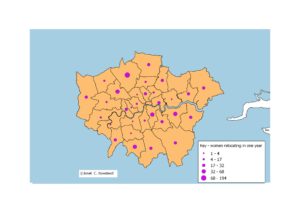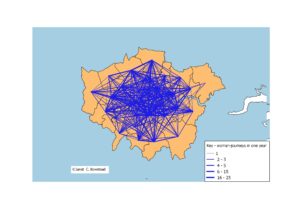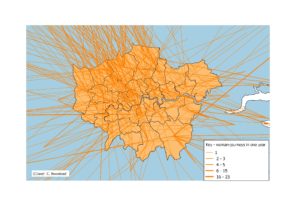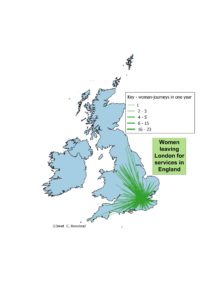Women make journeys to escape domestic violence – to escape a known abuser. They can be at highest risk of violence at the point of leaving, when a controlling partner senses or realises that she is breaking away from his control. Women’s ongoing safety often depends on keeping hidden – the safety of themselves and their children depends on not being tracked down. They will often travel to the least likely place, and cut contact with friends and family members, so that there is no chance of anyone disclosing where they have gone.
Their dangerous journeys are therefore hidden journeys.
Even when women and children are starting to resettle in a new safe area, they will often still keep very secret the details of where they have come from, and why they moved.
As a result, it is difficult to research these journeys – and vital that any research is carried out safely.
Research using administrative data is one way to carry out detailed research, but research which does not place women and children at risk. Administrative data are the information that services collect to manage and monitor what they do. If it is de-identified in terms of individuals (and confidential locations such as women’s refuges) it can be used to provide evidence of women’s relocation to access services. It can be used to carry out safe research on dangerous journeys.
For details of how such data are used in this project on women’s domestic violence journeys, see Administrative data as a safe way to research hidden domestic violence journeys
And for further details on using administrative data for research see https://adrn.ac.uk/





